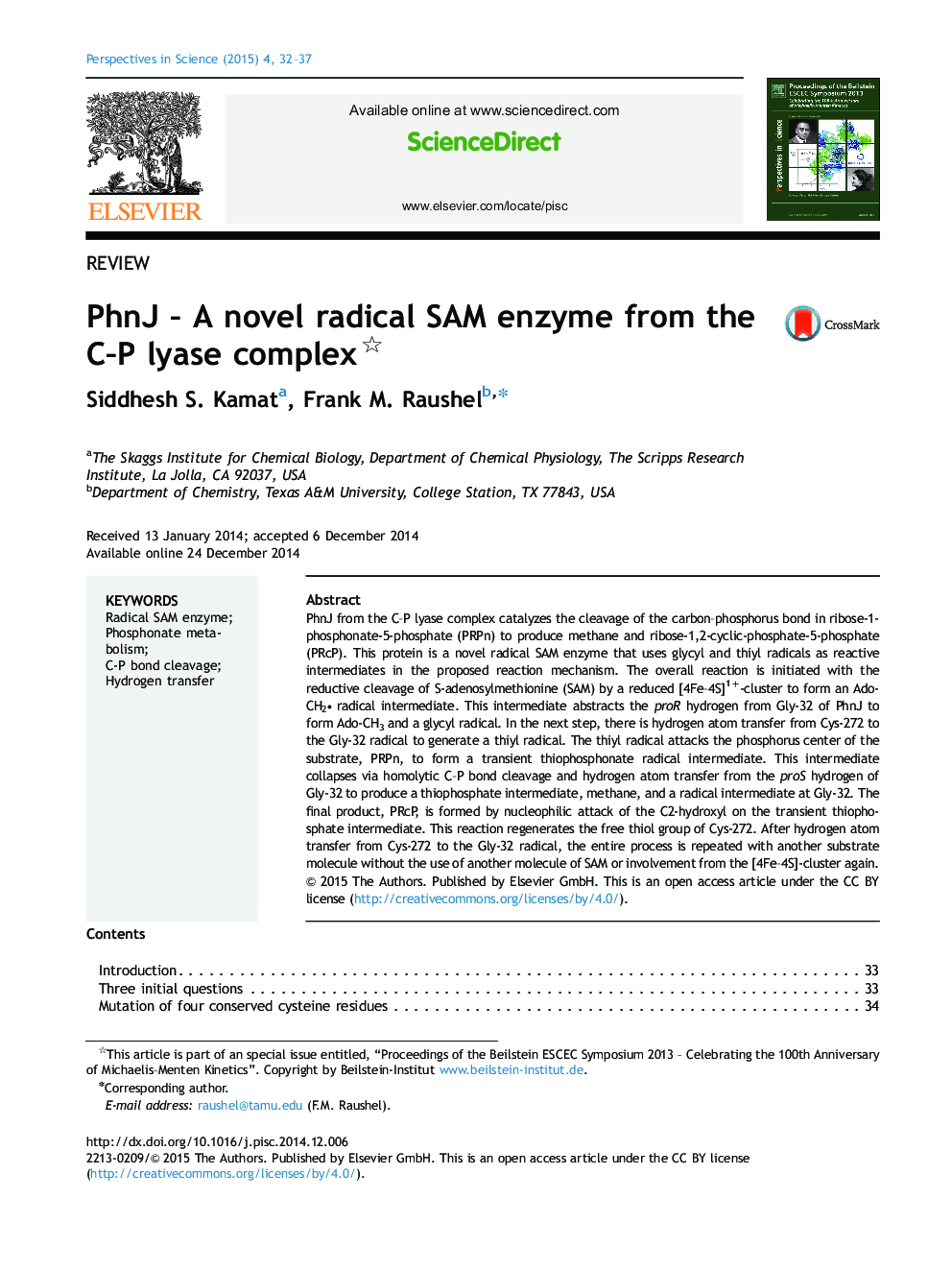| Article ID | Journal | Published Year | Pages | File Type |
|---|---|---|---|---|
| 2061683 | Perspectives in Science | 2015 | 6 Pages |
PhnJ from the C–P lyase complex catalyzes the cleavage of the carbon–phosphorus bond in ribose-1-phosphonate-5-phosphate (PRPn) to produce methane and ribose-1,2-cyclic-phosphate-5-phosphate (PRcP). This protein is a novel radical SAM enzyme that uses glycyl and thiyl radicals as reactive intermediates in the proposed reaction mechanism. The overall reaction is initiated with the reductive cleavage of S-adenosylmethionine (SAM) by a reduced [4Fe–4S]1+-cluster to form an Ado-CH2∙ radical intermediate. This intermediate abstracts the proR hydrogen from Gly-32 of PhnJ to form Ado-CH3 and a glycyl radical. In the next step, there is hydrogen atom transfer from Cys-272 to the Gly-32 radical to generate a thiyl radical. The thiyl radical attacks the phosphorus center of the substrate, PRPn, to form a transient thiophosphonate radical intermediate. This intermediate collapses via homolytic C–P bond cleavage and hydrogen atom transfer from the proS hydrogen of Gly-32 to produce a thiophosphate intermediate, methane, and a radical intermediate at Gly-32. The final product, PRcP, is formed by nucleophilic attack of the C2-hydroxyl on the transient thiophosphate intermediate. This reaction regenerates the free thiol group of Cys-272. After hydrogen atom transfer from Cys-272 to the Gly-32 radical, the entire process is repeated with another substrate molecule without the use of another molecule of SAM or involvement from the [4Fe–4S]-cluster again.
